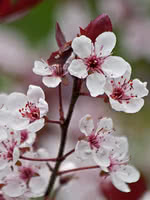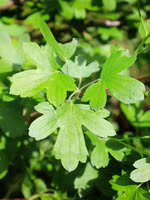Mon-Fri 9am - 5pm Mountain time
Purple Leaf Sand Cherry vs Golden Currant
Prunus x cistena
Ribes aureum
CUSTOM GROW
SOLD OUT
Purple Leaf Sand Cherry provides bright reddish-purple leaves that turn bronze-green in the fall. In the spring, tiny flowers with a pinkish white hue bloom. The flowers are small, but the impact comes from the shrub blossoming all at once.
The Purple leaf sand cherry can be susceptible to pests and diseases in more humid areas; a typical life span is approximately 15 years. Not suitable for a privacy hedge on its own but is often alternated with lilacs. Often used as an accent plant that attracts birds and bees.
Golden Currant produces berries for jams, jellies, sauces and even pemmican. This currant bush is very dense, allowing for use as a hedge, windbreak, or wildlife habitat.
This plant is also a very popular rootstock to graft popular red and white currant varieties to. The resulting plants are taller, more productive, and easier to harvest.
Purple Leaf Sand Cherry Quick Facts
Golden Currant Quick Facts
Toxicity: the leaves and seed are slightly toxic

